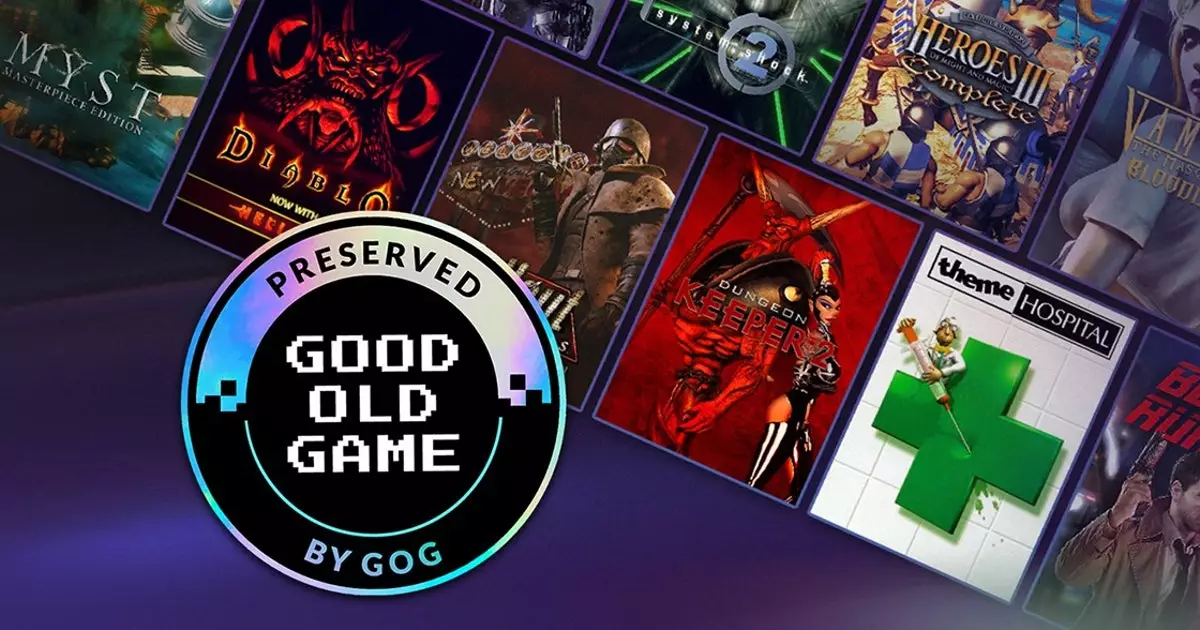In the realm of video games, the fine line between nostalgia and innovation is often blurred. GOG, a platform once celebrated for its rich collection of classic titles, is attempting to navigate this line with its newly announced GOG Preservation Program. This initiative not only signifies a dedication to the classics but also introduces novel technologies and methodologies to ensure that the games of yesteryear remain accessible and functional on modern hardware.
GOG has evolved over the years, blending its offerings from being a dedicated haunt for retro gaming aficionados to a diverse store that now showcases contemporary blockbusters alongside classics. This shift raises questions about the identity of the platform: is it merely a DRM-free version of Steam, or a genuine archive for gaming history? The announcement of the GOG Preservation Program demonstrates a conscious pivot back to the platform’s roots, while also acknowledging the realities of modern gaming. The program aims to breathe new life into classic titles, ensuring they run smoothly on contemporary systems.
The strategy is clear: GOG seeks to revive its branding as a champion of game preservation, while also appealing to a younger audience that may not have experienced these classics due to technical barriers. By marking these restored games with a special “Good Old Game” badge, the platform allows consumers to easily identify titles that have undergone significant enhancements. This includes bug fixes, modern compatibility updates, and additional content that may have been inaccessible in their original releases.
Crucial to the success of the GOG Preservation Program is the technical enhancement of vintage games. GOG developers are tasked with addressing longstanding issues that prevented these games from thriving in a contemporary gaming environment. The commitment to integrating modern technologies such as updated video codecs and proper compatibility with Windows 10 and 11 is a testament to GOG’s innovative approach.
Furthermore, the initiative mirrors Valve’s Steam Deck Verified system by adopting a similar philosophy of game performance verification. Through these enhancements, GOG is not just preserving games but is actively modernizing them, thus allowing both nostalgic players and newcomers to experience these classics in their best form.
The Rich Line-up of Revamped Classics
The initial batch of titles receiving the “Good Old Game” designation is impressive and varied. Classics such as the original *Resident Evil* trilogy, *Diablo*, *System Shock 2*, and *Vampire: The Masquerade – Bloodlines* are just some of the gems set to benefit from this program. One noteworthy entry, *Fallout: New Vegas*, though not as aged as others, highlights the pressing need for modern compatibility given its loyal fan base and ongoing modding community.
For many, the allure of revisiting beloved games comes with the caveat of technical difficulties—especially when attempting to play titles on systems that were not originally designed for them. GOG’s initiative to offer offline installers, complete with expansions and manuals, is not just a nod to nostalgia but also a strategic effort to foster a secure and immersive gaming experience.
Nevertheless, the journey for GOG is fraught with challenges. Getting permissions from original developers and publishers can be a complex task, and the reality is that not all classic games may find their way into the Preservation Program. This challenge forces GOG to operate in a delicate balance where commercial viability and preservation intersect.
Ultimately, while the initiative aims to preserve gaming heritage, it cannot overshadow the fundamental purpose of the platform: to generate revenue. There is an underlying acknowledgment that gamers cannot rely solely on nostalgia; they must also engage with GOG’s offerings as viable commercial products.
A Hopeful Future
As the gaming community becomes increasingly aware of the importance of game preservation—especially in light of recent lawsuits against publishers for making titles unplayable—GOG’s movement toward a robust preservation model is both timely and commendable. By striving to maintain the accessibility and usability of beloved classics, GOG is not just reminiscing about gaming history; it is actively ensuring that these stories and experiences endure for future generations.
The GOG Preservation Program stands as a glimmer of hope, signaling that even as games evolve, the past can still play a significant role in shaping the future of gaming. If successful, this initiative could inspire other platforms to join the efforts of preserving gaming heritage, ultimately cultivating a healthier ecosystem for games both old and new.

